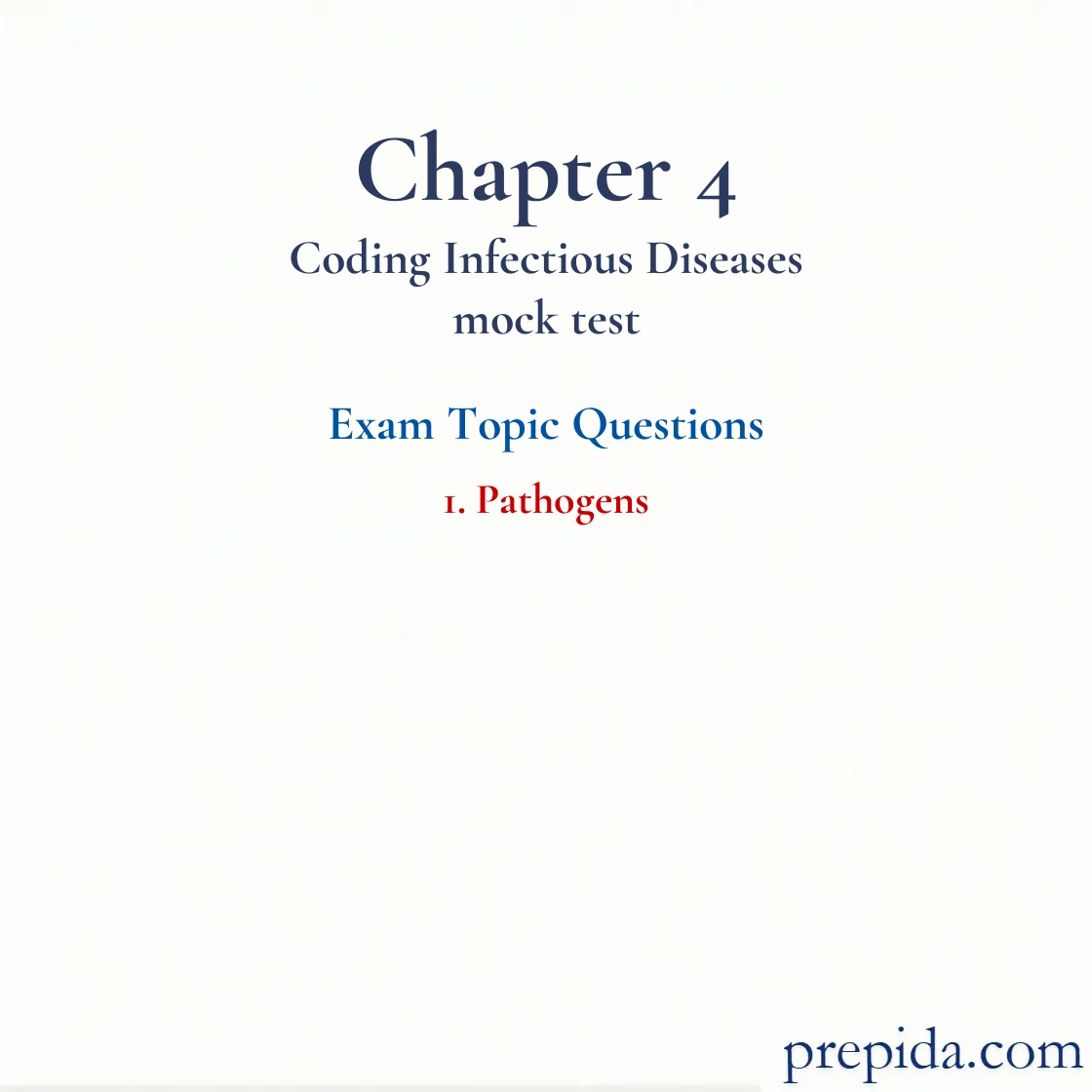
Mushrooms, yeast, and mold are edible forms of:
- bacteria.
- fungi.
- parasites.
- viruses.
Mushrooms, yeast, and mold are edible forms of fungi.
What is the most common nail fungus infection?
- Aspergillus
- Candida albicans
- Cutaneous blastomycosis
- Onychomycosis
The most common nail fungus infection is onychomycosis.
Lice and mites are examples of:
- bacteria.
- fungi.
- parasites.
- viruses.
Parasites are tiny living things that can invade and feed off other living things—like humans. They include one-celled organisms (protozoa), insects (lice and mites), worms (Helminthiasis), and others.
Para: An alphanumeric that identifies the number of times a woman has given birth, designated on the chart as P1, P2, etc.; had a fetus reach viability.
Malaria, a disease spread by mosquitoes, is an example of a:
- bacterial infection.
- fungal infection.
- parasitic infestation.
- viral infection.
Parasitic infestations can be transmitted in food, spread by mosquitoes and other insects through the bloodstream, or ingested in contaminated water.
Manifestation: A condition caused or developed from the existence of another condition.
Which of the following embed themselves in host cells and can be difficult to isolate?
- Bacteria
- Fungi
- Parasites
- Viruses
Viruses embed themselves in host cells.
Infectious: A condition that can be transmitted from one person to another.
Chickenpox is a:
- bacterial infection.
- fungal infection.
- parasitic infection.
- viral infection.
Examples of viruses include varicella (chickenpox), hepatitis, and viral pneumonia, as well as the common cold.
Infarction: Tissue or muscle that has deteriorated or died (necrotic).
Which of the following are single-celled microorganisms?
- Bacteria
- Fungi
- Parasites
- Viruses
Bacteria are single-celled microorganisms.
Bacteremia: The presence of bacteria in the blood; an abnormal blood culture.
Which of the following is the correct code for Wolhynian fever?
- A78
- A79.0
- A79.9
- A78.0, A79.0
Wolhynian fever is coded as A79.0. A79.0: Index>Wolhynian fever.
Diagnosis: A physician’s determination of a patient’s condition, illness, or injury.
Which of the following are named by their shape?
- Bacteria
- Fungi
- Parasites
- Viruses
Bacteria are named by their shape.
Bacteremia: The presence of bacteria in the blood; an abnormal blood culture.
What are hookworms, pinworms, and tapeworms examples of?
- Bacteria
- Fungi
- Parasites
- Viruses
Hookworms, pinworms, and tapeworms are all examples of parasites.
Para: An alphanumeric that identifies the number of times a woman has given birth, designated on the chart as P1, P2, etc.; had a fetus reach viability.
Which of the following can lay dormant for long periods of time?
- Bacteria
- Fungi
- Parasites
- Viruses
Viruses can lay dormant for long periods of time.
Infectious: A condition that can be transmitted from one person to another.
An infection can spread through:
- touching a doorknob.
- shaking someone's hand.
- picking up a used tissue.
- All of these
Infection can be spread through all of these methods.
Other Specified: Additional information that the physician specified and isn’t included in any other code description.
The presence of unknown bacteria in the blood may be diagnosed as:
- bacteremia.
- septicemia.
- sepsis.
- severe sepsis.
The presence of unknown bacteria in the blood may be diagnosed as bacteremia.
Bacteremia: The presence of bacteria in the blood; an abnormal blood culture.
Signs of infection include all except a(n):
- fever.
- rash.
- increased white blood cell count.
- change in heart rate.
A fever, increased white blood cell count, and change in the heart rate are all signs of an infection; a rash is not.
Sign: Objective evidence of a disease or condition.
George Honcera is diagnosed with hepatitis A. The physician gave him advice and literature to read about living with this virus. Report George's condition with code:
- Z20.5.
- Z22.59.
- B15.0.
- B15.9.
Code B15.9 reports hepatitis A without hepatic coma. B15.9: Index>hepatitis>viral>type>A.
Condition: A health-related situation.
Amebic appendicitis is reported with code:
- A06.81.
- A06.89.
- K37.
- K35.3.
A06.89 is the code for amebic appendicitis. A06.89: Index>appendicitis>amebic.
Diagnosis: A physician’s determination of a patient’s condition, illness, or injury.
Lenore, a 27-year-old female, was diagnosed with botulism from eating spoiled food. Report this with code:
- A05.1.
- A48.51.
- A48.52.
- A49.9.
Botulism food poisoning is reported with code A05.1. A05.1: Index>botulism.
Diagnosis: A physician’s determination of a patient’s condition, illness, or injury.
Where in the body can good bacteria be found?
- Brain
- Intestines
- Lungs
- None of these
Intestinal walls have good bacteria to aid in the digestive process.
Interaction: The mixture of two or more substances that change the effect of any of the individual substances.